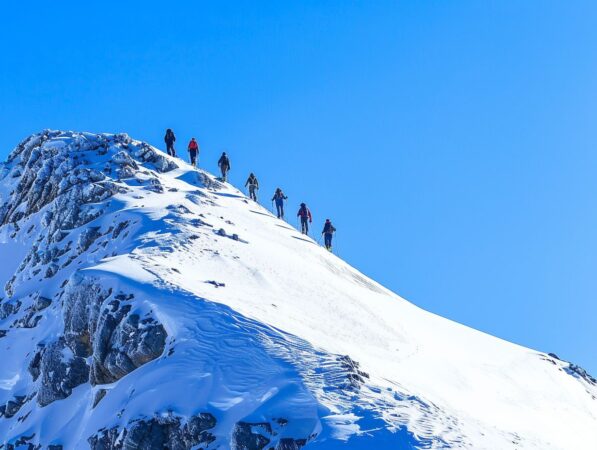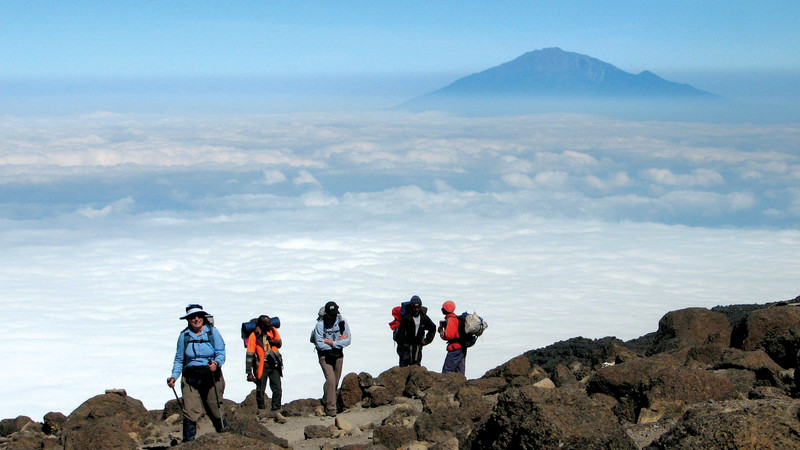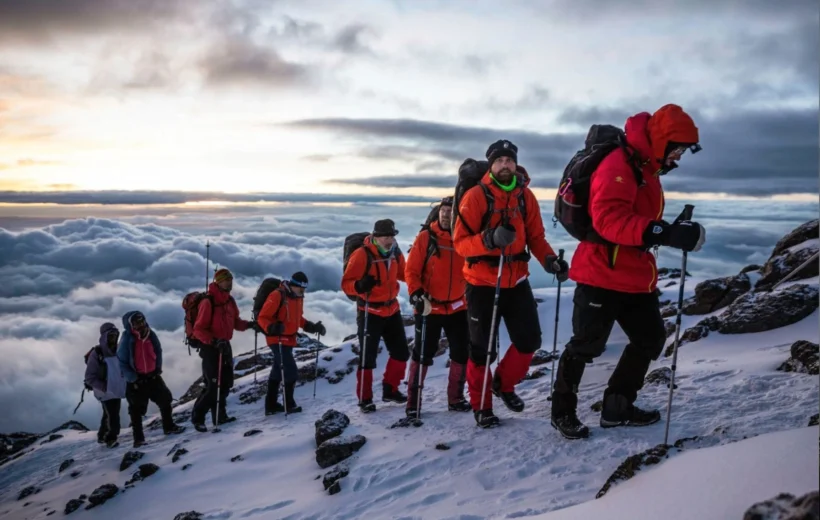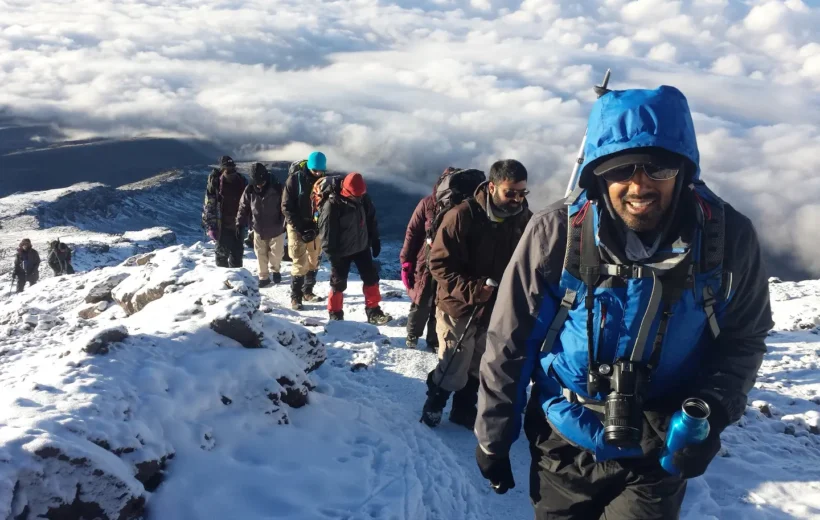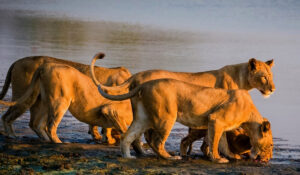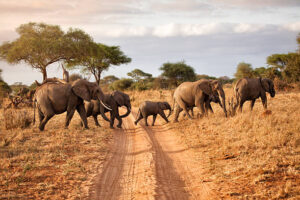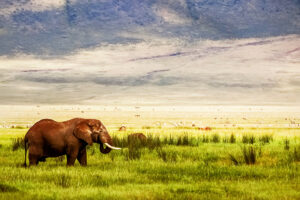Kilimanjaro North Traverse: The 7-Day Rongai Route
Overview
The Rongai Route is widely regarded as one of the easiest and most scenic paths to the summit of Mount Kilimanjaro. Approaching the mountain from the remote northern side near the Kenyan border, it offers a tranquil wilderness experience with fewer crowds. Climbers enjoy stunning views from multiple angles, especially since the descent follows the Marangu Route on the southern side, giving a complete and varied perspective of the mountain.
Accessing the trailhead involves a scenic three-hour drive from Moshi, weaving through vibrant villages and coffee farms, with a stop at Marangu to register climbing permits. The route can also be accessed via Amboseli National Park in Kenya; however, this requires advance passport clearance and about two hours of travel, including the border crossing.
Included/Excluded
- Park fees
- All activities
- All accommodation
- A professional driver/guide
- International flights
- Meals not listed in the itinerary
- Travel and Health insurance
- Tips and gratuities
- Additional activities and accommodation
Tour Plan
Day 0: Arrival and Pre-Trek Briefing
If you’ve arranged for airport transfers, you’ll be picked up from Kilimanjaro or Arusha Airport and transferred to your hotel in Moshi, where you'll receive a detailed pre-trek briefing. You’ll also review your gear and rent any missing equipment. Arriving at least one day before your trek begins is recommended to ensure you're well-prepared.
Day 1: Moshi to Simba Camp
After breakfast, you’ll head north toward the wooden village of Nale Moru, arriving after about two hours on the road. After permit checks at Marangu and a short preparation, the trek begins along a wide trail that winds through farmland of maize and potatoes before entering the cool pine forest. As you ascend steadily through this lush environment, you may spot wildlife hidden among the trees. By mid-afternoon, you’ll emerge into the moorland zone and reach Simba Camp, perched at 2650 meters (8700 feet) above sea level, after covering 6 kilometers (4 miles) over 3 to 4 hours. The day ends with dinner in the serene wilderness.
Day 2: Simba Camp to Second Cave
Today's hike continues through moorland terrain with a gentle ascent offering superb views of Kibo Peak and the Eastern Ice Fields. The trail steadily climbs to 3450 meters (11,300 feet) at Second Cave Camp, reached after 3 to 4 hours of trekking over 6 kilometers (4 miles). Meals are served at camp as you settle into the rhythm of high-altitude trekking.
Day 3: Second Cave to Kikelewa Camp
Heading east toward the jagged silhouette of Mawenzi, the route cuts through open moorland on a narrower trail. The landscape becomes drier and more rugged as you reach Kikelewa Camp, tucked in a sheltered valley surrounded by towering giant Senecios. The day involves 2 to 3 hours of hiking over 9 kilometers (5 miles), climbing to 3600 meters (11,800 feet) in elevation. The semi-desert habitat is stark yet beautiful, offering a unique alpine ambiance.
Day 4: Kikelewa Camp to Mawenzi Tarn
You’ll start the day with a steep ascent up grassy slopes that reward you with dramatic views of the surrounding highlands. Vegetation gradually thins as you approach Mawenzi Tarn Camp, set in a dramatic amphitheater below the spires of Mawenzi. Now at 4330 meters (14,200 feet), you’ll rest or take short acclimatization walks in the afternoon. The hike covers 6 kilometers (4 miles) and takes about 3 to 4 hours, with all meals served at camp.
Day 5: Mawenzi Tarn to Kibo Hut
Crossing the high-altitude saddle between Mawenzi and Kibo is like stepping into another world—a desolate lunar desert where the trail climbs gradually toward Kibo Hut. Located at 4750 meters (15,600 feet), this camp marks your final stop before summit day. The journey covers 9 kilometers (5 miles) over 4 to 5 hours, with the rest of the afternoon reserved for rest and early dinner in preparation for the pre-dawn summit push.
Day 6: Summit Day – Kibo Hut to Uhuru Peak to Horombo Hut
Rising shortly after midnight, you’ll begin the final and most demanding segment of the trek. Navigating steep scree slopes and switchbacks by headlamp, you ascend past Gilman’s Point (5700 meters / 18,700 feet) to reach Uhuru Peak, the highest point in Africa at 5895 meters (19,340 feet). The effort is immense, but the panoramic views and sense of achievement are unforgettable. After taking summit photos, you’ll descend to Kibo Hut for a brief rest and lunch, then continue down to Horombo Hut at 3700 meters (12,200 feet). This incredible day involves about 6 kilometers (4 miles) of ascent and 15 kilometers (9 miles) of descent, requiring a total of 12 to 16 hours of hiking through the icy heights and back to the moorlands.
Day 7: Horombo Hut to Marangu Gate to Moshi
On your final morning, a long 20-kilometer (12.5-mile) descent takes you first through moorland, then deep into the cool and lush Montane Forest, where Colobus monkeys and vibrant birdlife reappear. The descent typically takes 4 to 5 hours, ending at Marangu Gate (1700 meters / 5500 feet). After receiving your summit certificates, a vehicle will return you to your hotel in Moshi for a well-earned rest and celebration.

